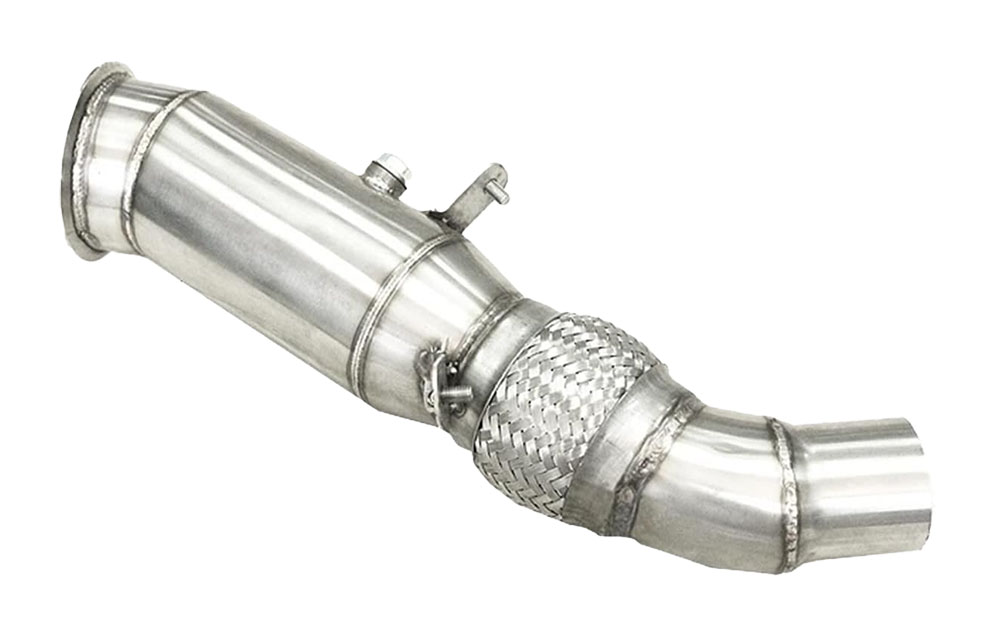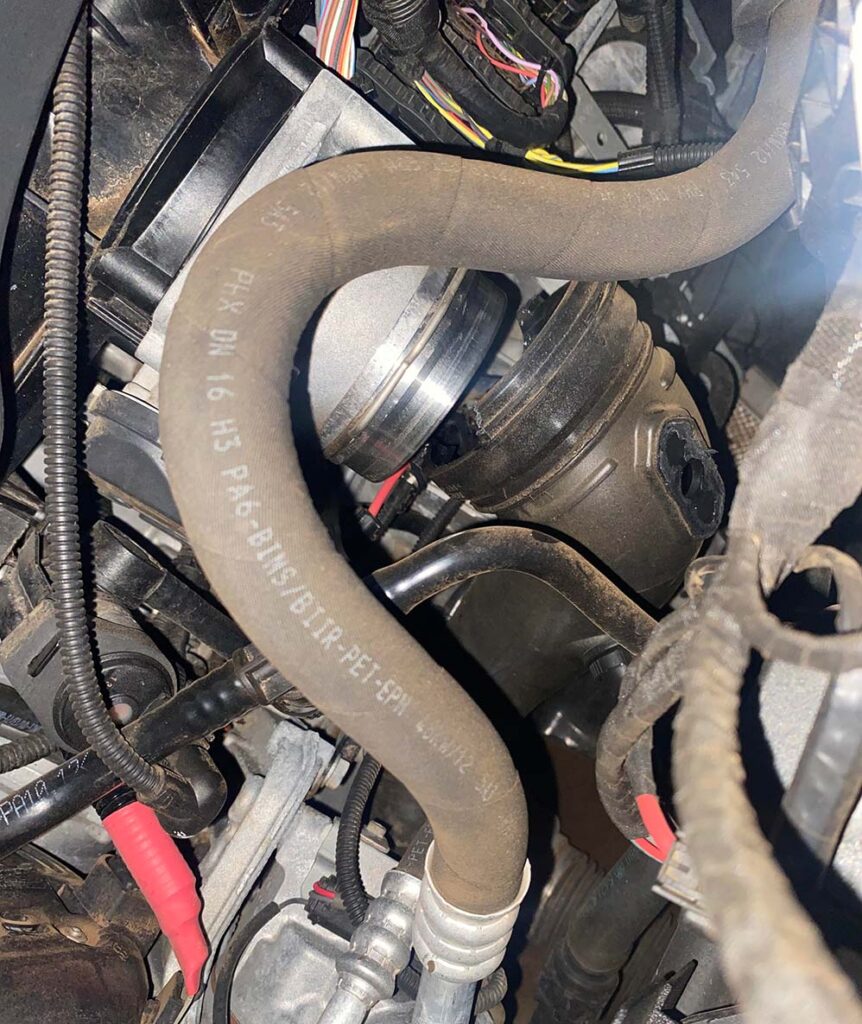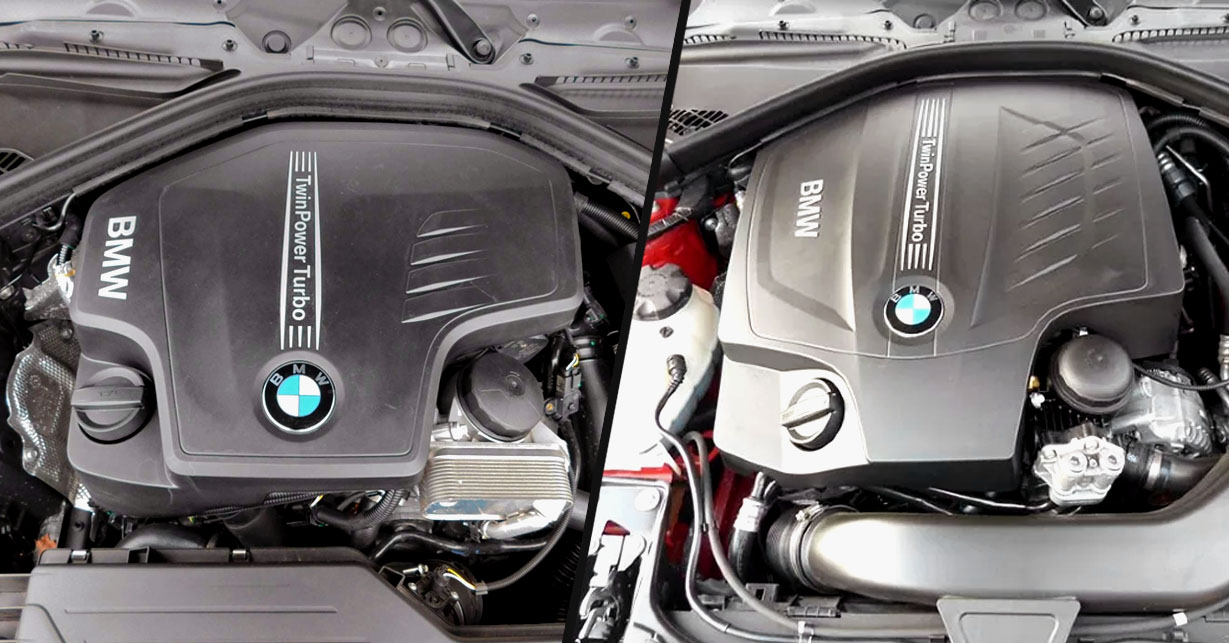The N20 and the N55 engines power a wide range of BMWs, all the way from the compact 228i to the hefty X5 xDrive40e. While it’s clear that they’re very different powerplants targeting different buyers, they both have their own merits.
The N20 is an efficient turbo inline-4 perfect for a peppy daily driver, while the N55 is a smooth and powerful turbo inline-6, a great starting point for performance-oriented BMW.
Here is an in-depth comparison between the two engines in terms of horsepower, torque, tuning capabilities, sound, and reliability.
BMW N20 vs. N55 Specifications

| N20B20 | N55B30 | |
|---|---|---|
| Configuration | Inline-4 | Inline-6 |
| Displacement | 2.0 L (1,997 cc) | 3.0 L (2,979 cc) |
| Max. Horsepower | 241 hp @ 5,000 RPM | 365 hp @ 6,500 RPM |
| Max. Torque | 258 lb-ft @ 1,250 – 4,800 RPM | 369 lb-ft @ 1,450-4,750 RPM |
| Turbocharger | Single twin-scroll turbocharger | Single twin-scroll turbocharger |
| Bore & Stroke | 84mm x 90.1mm | 84mm x 89.6mm |
| Redline | 7,000 RPM | 7,000 RPM |
| Compression Ratio | 10.0:1 | 10.2:1 |
| Block & Head Material | Aluminum | Aluminum |
| Dry Weight | 317.5 lbs | 427 lbs |
| Years Produced | 2011-2017 | 2009-2018 |
N20 vs. N55 Overview
The N20 engine is the successor to the N52, offering similar horsepower and better efficiency. The N20 is a turbocharged inline-4, departing from BMW’s tradition of making naturally-aspirated inline-six engines.
The N20 was aimed at providing improved fuel efficiency while still delivering a good balance of performance. While it excelled at that, the increase in complexity resulted in a less reliable engine than its predecessor.
On the other hand, the N55 engine was BMW’s successor to the highly regarded N54 engine. The main difference was switching to a single twin-scroll turbo configuration for simplicity and to try to improve reliability. BMW also attempted to reduce production costs, and this meant that the N55 no longer had a forged crankshaft like its predecessor.
N20 vs. N55 Horsepower & Torque
The N55 engine delivers higher horsepower and torque figures than the N20, as expected from an engine with a larger displacement engine and with two extra cylinders.
The N20 outputs 241 hp and 258 lb-ft of torque, less than the N55’s 302 hp and 295 lb-ft of torque.
While the N20 produces 241 horsepower and 258 lb-ft of torque, the N55’s power output is rated at 302 horsepower and 295 lb-ft of torque. The high-output version of the N55 that powers the F87 M2, the N55B30T0, produces 365 hp and 369 lb-ft of torque.
The way both engines deliver power is similar, in a very linear manner for a turbocharged engine. Lots of torque in the low end of the RPM range makes both engines a breeze to drive in the city, with the N55 feeling stronger.
Despite the noticeable power output difference, the N20 has more than enough power for most scenarios
To truly notice the difference in power between both engines, you’ll have to get on the highway or a long stretch of an empty road. While you won’t need to bring these engines to redline to exploit their power potential, above 4,000 RPMs is where you’ll notice that the N55 just keeps building power almost up to redline while the N20 runs out of breath above 5,000 RPMs.
Overall, for city driving, the power of the N20 is more than sufficient, but if you’re looking for a highway monster with more than enough power for passing and merging, the N55 will probably exceed your expectations.
Horsepower & Torque Winner: N55.
N20 vs. N55 Tuning & Modifications
Both the N20 and the N55 engines have significant tuning potential, but the N55 engine can be pushed to much higher power levels. From the factory, the N55 has more headroom for reliable horsepower and torque gains.
With a simple stage 1 tune, both engines can see gains of around 30-50 horsepower and 40-60 lb-ft of torque, bringing the N20’s power output very close to a stock N55.
Both engines are receptive to mods; the N55 is a much better choice for extensive tuning
However, if you want to modify and tune your engine beyond an ECU flash, the N55 will be a much better option from the start. Highly tuned N20 engines may achieve power levels higher than a stock N55, but at that point, it becomes more cost-effective to start with an N55 engine.

A stage 2 tune with bolt-ons such as a catless downpipe, aluminum charge pipe, and an upgraded intercooler can bring the N20 up to around 340 hp and 380 lb-ft of torque, while an N55 with the same mods can come close to 400 hp and 480 lb-ft of torque.
If you need even more horsepower, both engines will need upgraded fuel pumps, a bigger turbo, and a less restrictive intake. The maximum horsepower of an N20 is ~400 hp while you can take an N55 to the ~600 hp mark. Beyond that, you’ll need to upgrade the internals of the engine block.
At this point, it is more cost-effective to opt for a B58-powered BMW. While the N55 has a higher power ceiling than the N20, it is an open-deck engine without forged internals, and this ultimately limits its maximum power output.
Tuneability Winner: N55.
N20 vs. N55 Reliability & Common Issues
Both the N20 and N55 engines share some common failure points due to their similar designs but they also have their own unique issues. The most common issues shared by both the N20 and the N55 are:
- Oil leaks from the valve cover gasket
- Oil leak from the oil filter housing gasket.
- Water pump failure.
- Coolant leak from the mickey mouse flange.
- Cracked charge pipe.
- High-pressure fuel pump failure.
- Injector failure.
- Turbocharger wastegate rattle.

BMW N20 Timing Chain Issues
The N20 engine has a unique and well-documented issue with premature timing chain failure. Due to a design flaw and subpar materials, the plastic timing chain guides in N20 engines break down over time. This causes the timing chain to lose its tension and fail to function within its factory specs.
A failing timing causes excessive noise and drivability issues. If the issue is left unattended, the timing chain will eventually completely fail and this may cause catastrophic engine damage.
BMW attempted to address this issue by introducing updated timing chain guides on N20 engines manufactured after 2015. However, many early N20 engines may still be prone to timing chain guide failure, requiring a complete timing chain replacement.
BMW N55 High Rod Bearing Wear Issues
The N55 engine, while generally reliable, can suffer from high rod bearing wear which can lead to a spun bearing or rod knock. Although the issue is not common, it can cause catastrophic engine damage.
To reduce the chances of this occurring on the N55, we recommend oil change intervals between 5,000 and 7,000 miles, priming the oil system after an oil filter housing replacement, and letting the oil and engine warm up before putting high loads on the engine.
Overall, while both engines have similar problematic areas, the N55 engine tends to have slightly better long-term reliability compared to the N20. Note that the N55 is less reliable than its successor.
Reliability Winner: N55.
N20 vs. N55 Exhaust Sound
The N55 engine is widely regarded as one of the best-sounding BMW inline-6 engines, and the best-sounding turbocharged inline-6. It outputs a smooth, refined exhaust note that more than satisfies those who love the sound of the straight six and those who love the sound of a turbo engine.
The N55 is the best-sounding BMW inline-6, while the N20 is a raspy inline-4
Here are some sound clips of a N55 335i with a modified exhaust:
Even a stock N55 sounds great in Sport mode, and the M Performance exhaust takes it to the next level. BMW really hit the nail on the head in terms of exhaust note on the N55, and neither its predecessor nor its successor sound as good despite also being turbo inline-6 engines. The N55 also sounds much better than its high-performance variant, the S55.
On the other hand, the N20 engine lacks the inspiring sound of the N55. It has a raspy and diesel-like sound, which leaves a lot to desire. It’s difficult to love the sounds coming out of the N20.
Exhaust Sound Winner: N55.
N20 vs. N55 Fuel Economy
Fuel consumption is where the N20 has an advantage over the N55. Its compact 2.0L 4-cylinder configuration along with direct injection, and BMW-specific tech like Valvetronic allow the engine to be very efficient and get great MPG figures. An N20-powered 3 Series is rated for a combined 27 MPG, and getting 500 miles of range in the highway isn’t unheard of.
While an N55-powered 3 Series is similarly rated at a combined 26 MPG, getting this figure with real-world driving will be difficult. That said, the N55 is more efficient than its predecessor.
Fuel Economy Winner: N20.
Conclusion: Is the N55 the better engine?
When we look at horsepower, torque, tuning potential, sound, and reliability, the N55 engine is clearly the better choice. It offers significantly more power and torque across the rev range, delivers power in a smoother manner, and produces a more pleasing exhaust note.
However, the N20 engine still has its merits, particularly in terms of fuel efficiency and initial cost. If fuel efficiency is a priority and the budget is a concern, the N20 engine provides decent performance if you’re just looking for a peppy BMW daily driver. Just look for a post-2015 model or one with a new timing chain.

